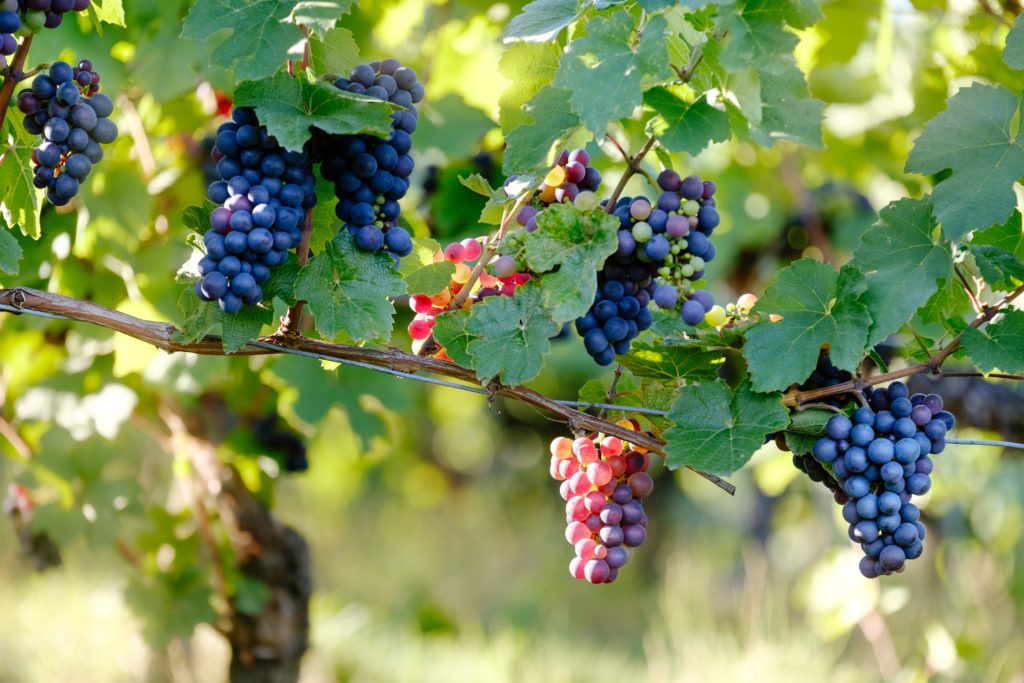Overview of Red Wines
Episode #1 of the course Introduction to red and white wine by Paul Kalemkiarian
Hello, fellow wine enthusiast.
Thanks for joining this Introduction to Red and White Wine. I’m Paul Kalemkiarian, the second-generation owner and cellarmaster of the Original Wine of the Month Club®.
These days, there are many wine clubs, but when my dad started in 1972, his was the very first. His idea was not born of selling more bottles in his wine shop, but that of finding the best values for his customers (and the guiding philosophy today). After 46 years in the industry, we have much to share. In this course, we’ll take a look at popular red and white grape varietals, the different ways that wine is made, and how to recognize and pair different wines.
First, let’s get an overview of red wines and their history.
The flavor of any wine will depend on its primary ingredient, the grape—or to be more precise, the variety of grape. Wine is 95% water, so the 5% that constitutes the flavor of wine comes from the grape. There are about 20 different Latin classifications of wine grapes—it is the Vitis vinifera that prevails for making good wine. Inside this one species, there are over 5,000 varieties. Would you suppose, then, that there are over 5,000 different flavors? No! Although scientists swear that they’ve isolated thousands of different flavor traces present in wine, there may be as few as 50 grape varieties that can give a recognizable taste to wine—and fewer than 20 of these are of anything more than local importance.
Thus, the grapes we’ve chosen to look at are the world’s leading red grapes. It’s amazing how few there are! Vine growing is not unlike gardening. The answer does lie in the soil. Just as you can’t grow roses in a sunless garden with unsuitable soil, most varieties of vine have historically proven to have strong preferences as to where they like growing. Not only do they simply not grow in some locations, but the quality of the wine can vary enormously.
The term “terroir” (from the French “terre,” relating to “land”) refers to the whole environment in which a wine is produced. This includes such diverse factors as climate, topography, soil quality, and farming practices. In the ancient world, Greeks would stamp each amphora (wine vessel) with a seal showing the region from which it originated, with certain areas developing a reputation for good quality wine. Benedictine monks, with large vineyards that allowed them to better study the effects of place and climate on their crops, further refined the concept of terroir. Legend has it that monks even tasted the soils of different regions to help them better understand the factors in play (a great exercise today if you want to taste dirt). These monks began to draw the geographic boundaries that would later inform the establishment of France’s Grand Cru vineyards in Burgundy.
As early as the 14th century in Burgundy, Duke Philip the Bold ordered that the Gamay vine should be uprooted from his vineyards, since it did not produce wines nearly as good as the Pinot Noir. It is still banned from use in fine Burgundy but makes wonderfully complex wine just south of Burgundy, in the region of Beaujolais.
Pinot Noir itself is another tricky grape. For years, it resisted attempts to have successful wine made from it, except in Burgundy. Only recently (the past 30 years) does it seem that suitable homes may have been found for it in places as far from the heart of France as California, Oregon, and New Zealand.
In many areas of the world—especially in “Old World” wine countries, where the art of winemaking originated—great importance is attached to the mixture of varietals. This is particularly true in Bordeaux, where the great clarets are almost always blends of three or more grape varieties—principally, Cabernet Sauvignon, Merlot, and Cabernet Franc (Malbec and Petit Verdot are also allowed). More importantly, the appellation (district) is what drives the consideration of a wine rather than just what grapes it is made from.
In “New World” wine-producing areas—the Americas, Australia, Asia, and elsewhere—the trend is now leaning toward making wines sold simply by the name of the grape from which they are made. In most cases, the grapes that these New World winemakers have chosen to grow are still the noble grapes from the great wine areas of Europe. Across the world, these are the beloved varietals that have stood the test of time and terroir.
In our next lesson, we’ll talk about which red wines are the most popular worldwide and look a bit more closely at what makes each one unique.
Recommended book
Shortcuts on Wine by Ed Masciana
Share with friends

